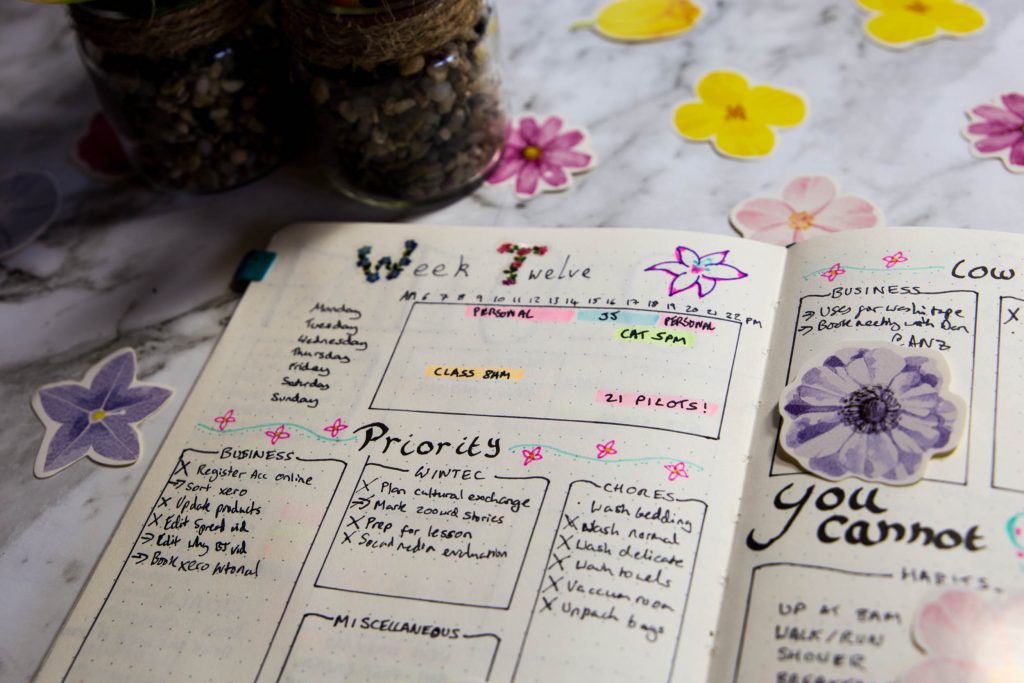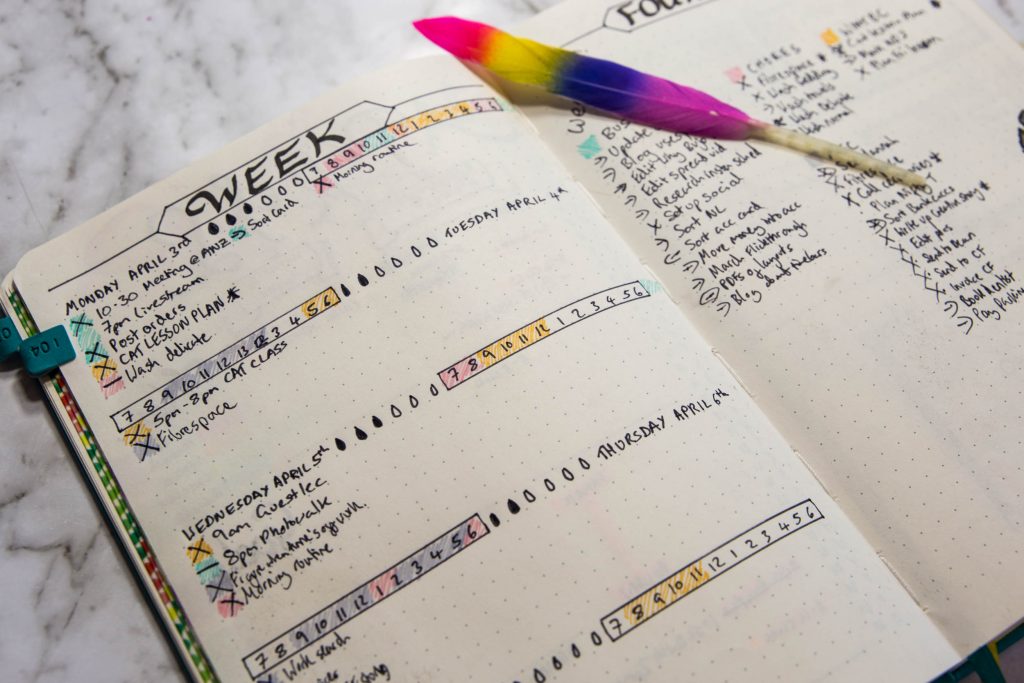They can be great for prioritising your time or tracking where you spend it. Most of them are colour-coded and are used in daily spreads - but that didn't stop us trying to incorporate them into our weekly spread!
The idea is there is a square or block for every hour or half-hour, and you fill in as you're going along to track, or fill in at the beginning of your day to plan it.
We spent three weeks trying three different time ladders in our weeklies so you don't have to.
Here's our take.
The Compressed Time Ladder

Pros:
It's easy to fit all seven days into a weekly.
You see your week at a glance.
Cons:
It was actually hard to see appointment times.
Not enough space to write what the colour responded to.
Easy to ignore
Comments:
So, we thought this would be a great way to track your time, until we reviewed it at the end of the week and realised we'd managed to ignore it almost completely.
It's so out of the way, nothing was filled in as we were going - I assume this is why they work much better in daily spreads.
Seeing what the colours referred to was difficult. There wasn't enough space to write time details or tasks, so, unless you can break your life down simply into colours, it's not actually showing you very much.
One major plus, though; it was easy to fit all seven days into our weekly. Something that proved difficult with the others.
Try it! Dimensions for 0.5cm dots: Box is 8.5cm by 3.5cm for 6am to 8pm. Extra space needed for numbers and days.
The Vertical Time Ladder

Pros:
Heaps of space to fit in tasks and details.
Could fit in six days pretty easily.
Really easy way to plan your day.
Cons:
Can only fit in six days.
Gets a bit messy with lots of tasks.
Only covers from 7am until 6pm.
Comments:
This was easily our favourite of the three. There was plenty of space to fit in tasks and appointments most days and it stayed pretty tidy.
It was hard to ignore because each day was linked to it.
I blacked out travel time, which was super useful because, although an appointment starts at 8am, you're not going to be able to do anything in the time it takes to get there.
I also changed my marking from highlighters to my pastel Staedtler Triplus Fineliners, which made it easier to mark half-hours.
I would have made the day's titles stand out a bit more if I did it again (which I probably will). It definitely made me super efficient as I focused on one thing at a time.
The only downside is I could only fit 6 days on the page which, when you don't have normal weekends, can be a pain.
It also is designed for 7am until 6pm - not ideal for evening appointments or tasks. But with dailys, you take as much or as little space as you need so it would be easy to extend the hours.
Try it! Each bar is 6cm long and 0.5 cm wide - but 1cm wide to do the two facing each other. Total for three: 18cm by 1cm.
The Horizontal Time Ladder

Pros:
Splits up the days really easily.
Doesn't take up too much space
Space to split tasks or appointments into columns.
Space to include as many hours as you like.
Cons:
Only fit 5 days on a page
Not a heap of space to write tasks or appointments - not ideal if you write large.
Comments:
This would make heaps of sense in a daily - each day takes as much or as little space as you need.
But in a weekly, only being able to fit in five days on one page might be troublesome if you have busy weekends. Although, I could have put some more on the page opposite if I was happy sacrificing tracker and list space.
It is aesthetically pleasing. The bars, along with the water tracker and titles, help split up the page really clearly.
You could fit two columns of tasks or appointments, three if you have small handwriting, which would be good for breaking up categories of to-do lists as long as they weren't too long.
I love putting the water tracker on the same line - Something about it really worked for me.
Try it! Each bar is 6cm long and 0.5 cm tall. Each day, including the time bar, is 3.5cm tall.
Conclusion on Time Ladders
Time ladders would be a great addition to a daily - they are definitely harder to fit into weekly spreads, but it is possible!
They made us more conscious of our time and how we used it. Having defined hours in which to complete certain tasks was a great motivator. We were less likely to get distracted because we could check our phones/do our chores/ play with our puppies when the chunk of time was over.
They're definitely worth trying! And I think we'll be experimenting a bit more with them to make them work best in a weekly spread.
We'll let you know if we get any updates!
For now, thanks for reading Journal Junkie!
Want more? Join the club!
[ux_product_categories number="10" parent="0" columns="4" title="Our categories" ]



